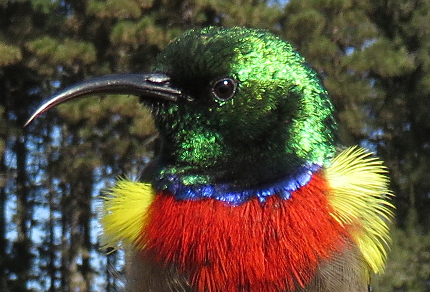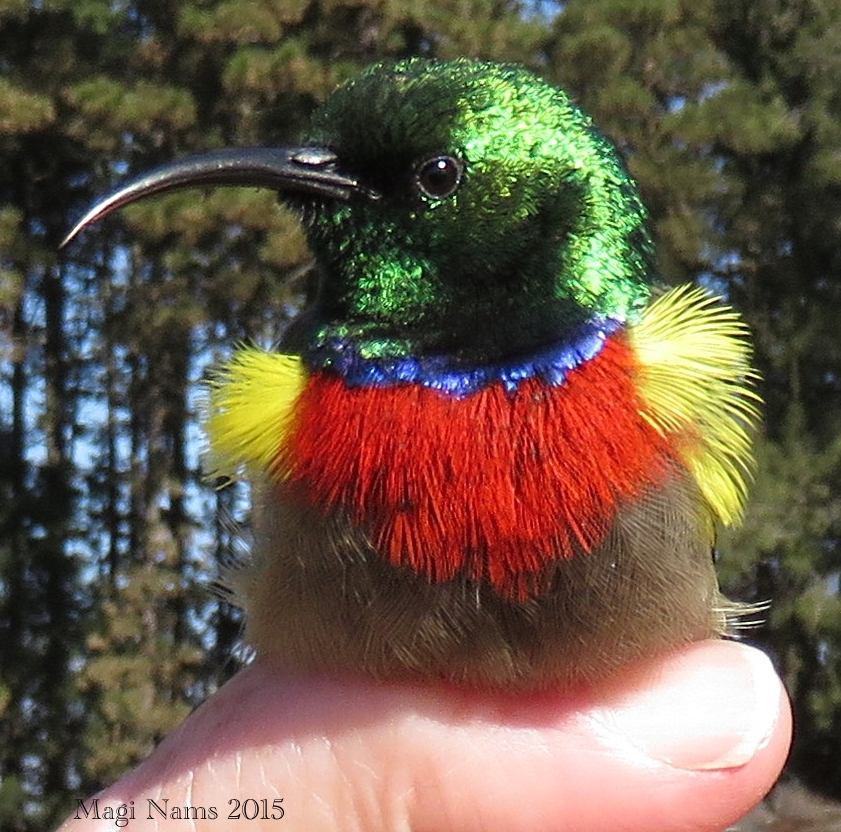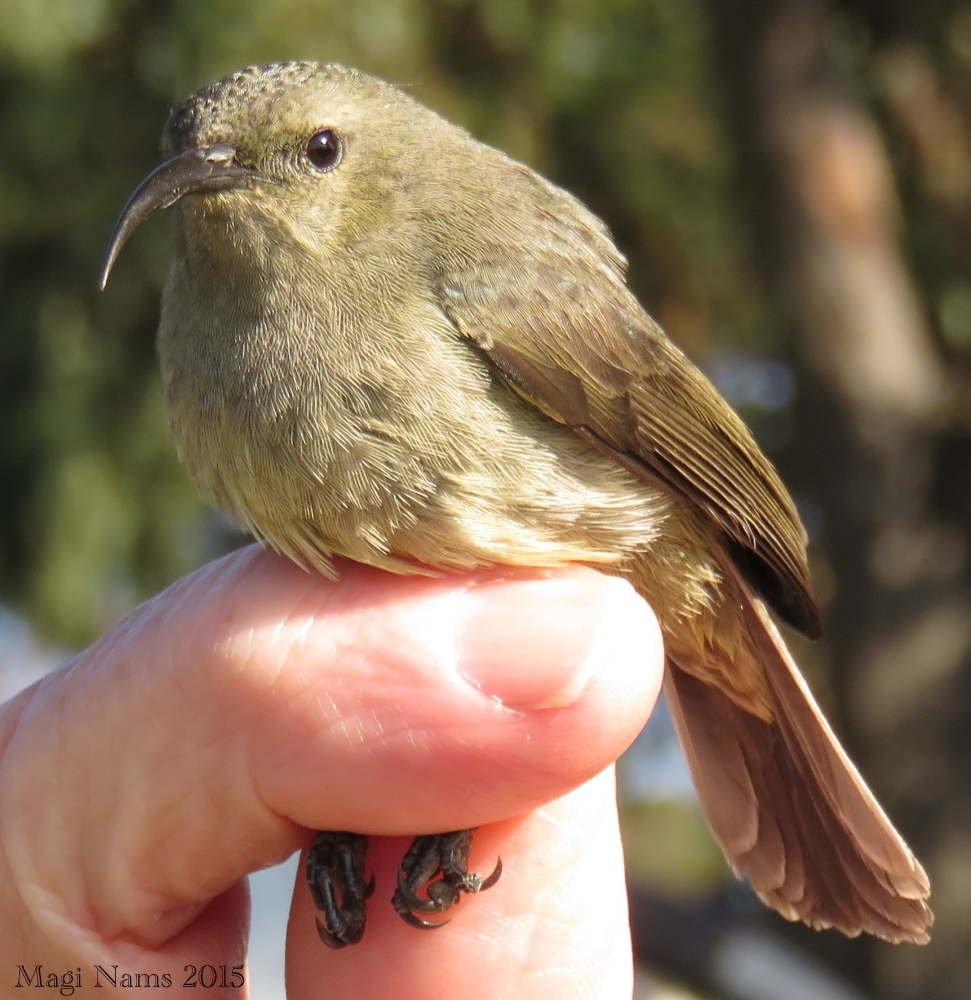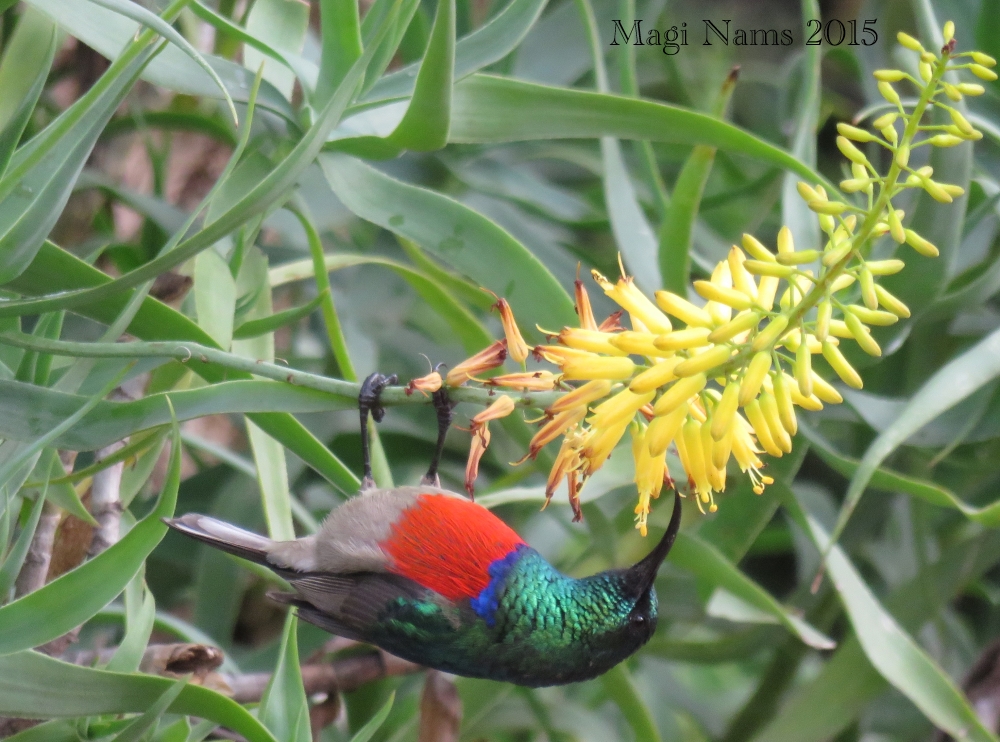Petite and agile, the southern double-collared sunbird and greater double-collared sunbird are avian jewels and nectar feeders extraordinaire in Southern Africa.
Since I missed last week’s “bird-of-the-week” post (my apologies; I’m writing like mad these days), this week’s featured bird is a two-fer. Both birds are from Southern Africa and are strikingly similar in appearance and habits. First, we have the southern double-collared sunbird, Cinnyris chalybeus. Second, we have the greater double-collared sunbird, Cinnyris afer. Both species occur in South Africa and Swaziland. In addition, the southern double-collared sunbird occurs in Namibia, and the greater double-collared sunbird occurs in Lesotho.1,2
The males of these two species are avian jewels. They have iridescent green heads and necks, red breast bands bordered with violet above, and yellow epaulets that are sometimes visible. The females are delightful but not showy at all; rather, they have a drab brown-grey plumage.
Twenty-one sunbird species occur in Southern Africa.3 All belong to the avian family Nectariniidae, which gives you a good clue as to these birds’ primary food source. Both double-collared sunbird species have long, down-curved bills that are ideal for probing flowers for nectar.4 These birds also consume insects and spiders.4
So, how do we tell the difference between these two very similar species? A greater double-collared sunbird, as its name implies, is larger (14.5 centimetres versus 12 centimetres) and heavier (12.5 grams versus 8 grams) than a southern double-collared sunbird. It also has a longer, less curved bill.4
A male greater double-collared sunbird has a noticeably wider red breast band than does a male southern double-collared sunbird.4 Check out the males in the photographs above to note the difference.
Other identification clues are voice and habitat. Both of these sunbird species sing bright, twittering songs, but the southern double-collared sunbird’s voice is higher pitched and its song is faster than that of the greater double-collared sunbird. Southern double-collared sunbird habitats include forests, gardens, fynbos and Karoo shrublands. Greater double-collared sunbird habitats include forest edges, gardens and tall shrublands.4
During the six months Vilis and I spent in South Africa, I fell in love with sunbirds, which reminded me of the New World’s nectar-feeding hummingbirds. We were based at Rhodes University in Grahamstown, a lovely campus with many plantings of flowering trees, shrubs and perennial flowers. I frequently saw greater double-collared sunbirds, malachite sunbirds and amethyst sunbirds on campus and in Makana Botanical Gardens adjacent to the university.
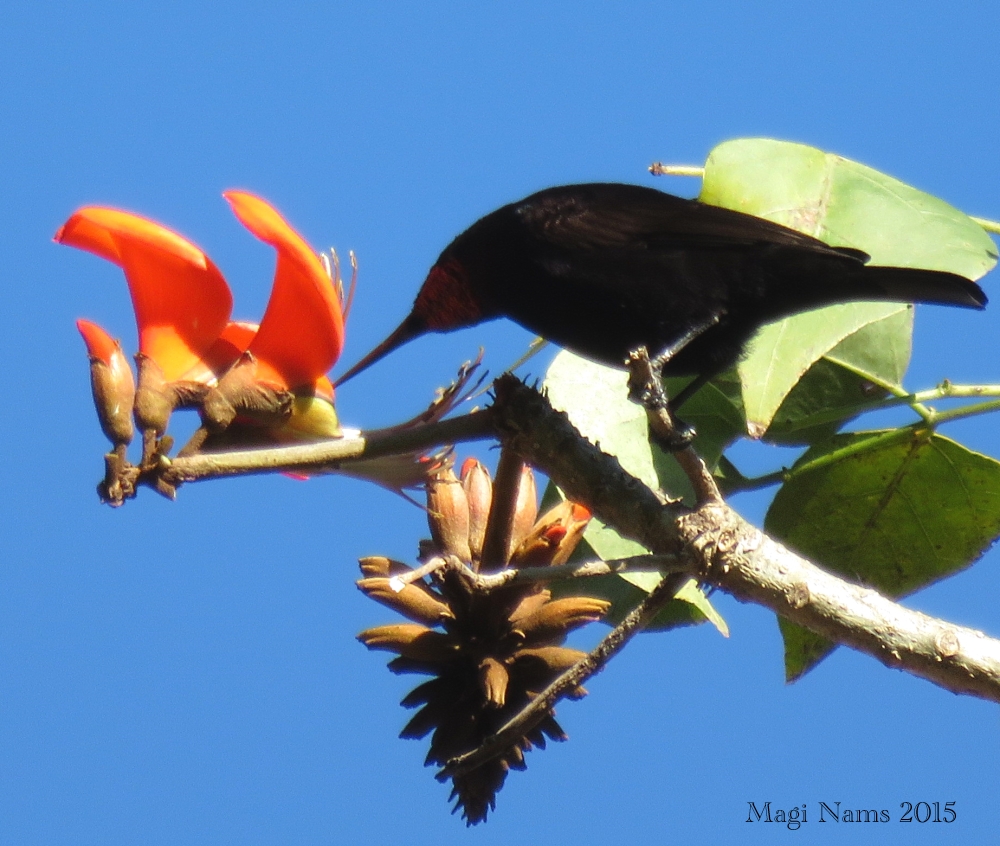
Male Amethyst Sunbird (Chalcomitra amethystina) (©Magi Nams) Note the iridescent amethyst throat patch.
I saw and photgraphed my first male and female southern double-collared sunbirds while on a bird-ringing excursion in montane forest at Fort Fordyce Nature Reserve. As you can see in the first two images in this post, these sunbirds are tiny, and the male’s plumage is truly glorious!
References:
1. BirdLife International. 2016. Cinnyris afer. The IUCN Red List of Threatened Species 2016: e.T103798399A94556884. http://dx.doi.org/10.2305/IUCN.UK.2016-3.RLTS.T103798399A94556884.en. Downloaded on 30 March 2017.
2. BirdLife International. 2016. Cinnyris chalybeus. The IUCN Red List of Threatened Species 2016: e.T22717869A94556435. http://dx.doi.org/10.2305/IUCN.UK.2016-3.RLTS.T22717869A94556435.en. Downloaded on 30 March 2017.
3. Hugh Chittendon. Roberts Bird Guide, 2014 edition.Trustees of the John Voelcker Bird Book Fund, Cape Town. pp. 308-315.
4. Chittendon, p. 312.

